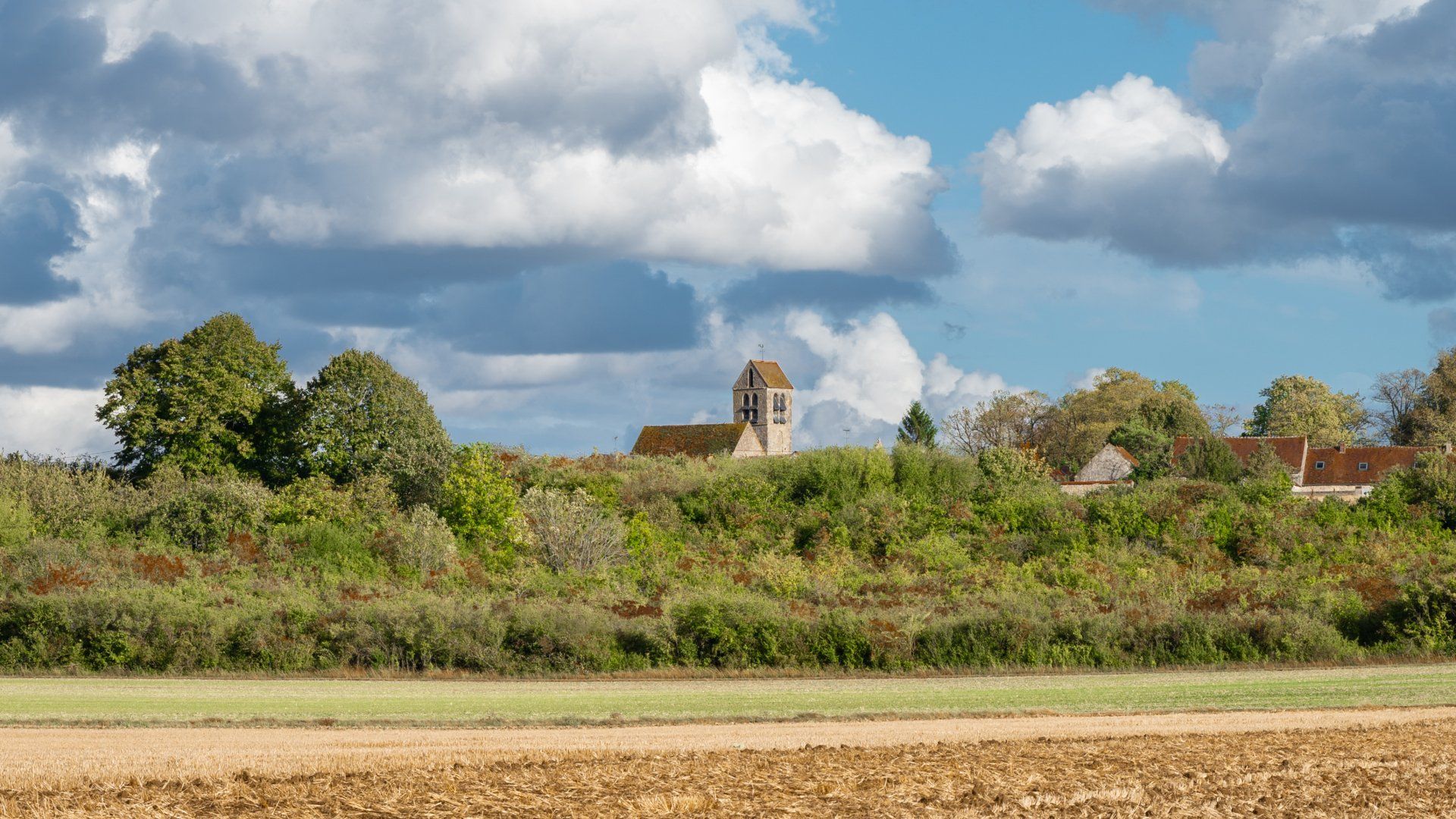Rumont
A pretty little village of 126 inhabitants, quiet, perched on a green hillock, the territory of Rumont is essentially agricultural.
The site has been inhabited since the Neolithic period (6,500 to 3,950 BC), as demonstrated by the dolmen known as "La Pierre l'Armoire" or "le polissoir de Rumont" (the Rumont polisher), which can be seen today at the Ile de France museum of prehistory in Nemours.
In the heart of the village, a shady square recalls the site of the former courtyard of the castle, built in the 16th and 17th centuries, which was pillaged and divided up.
Not far from the castle stands the 12th century church of Saint-Denis. The church has a nave covered with a wooden ceiling made in the 18th century.
Rumont still retains some traces of its feudal past with a seigneurial farm dependent on the castle, guarded by a monumental entrance with a carriage gate and a pedestrian gate, both separated by a well dug in the wall.




